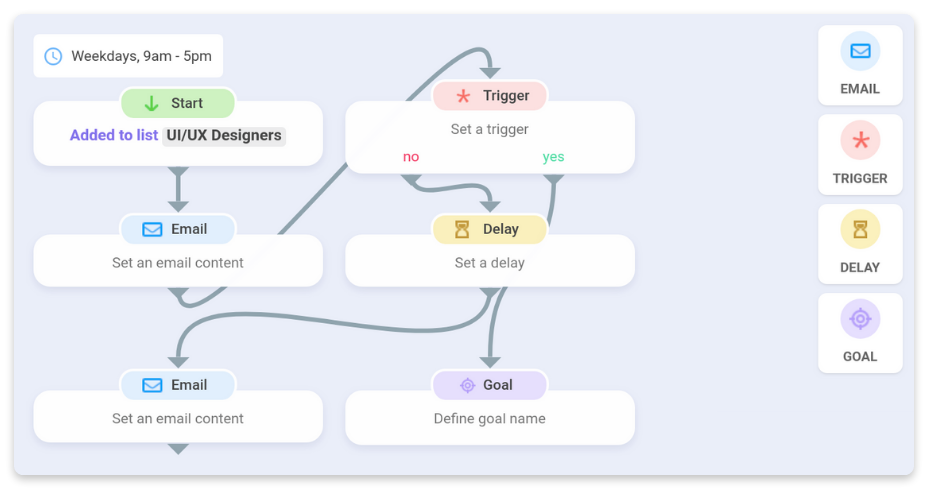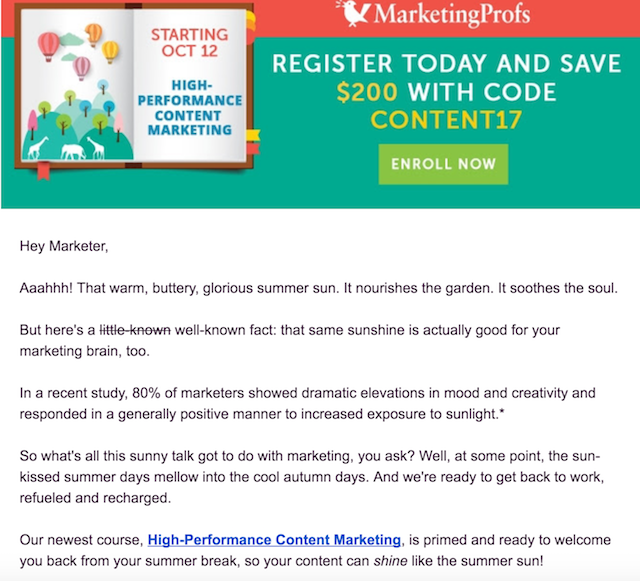
Lead outreach is not an easygoing job, especially when you perform cold mailings or prepare a follow up email after no response. You have to face – when a message drops in the recipient’s Inbox, it occurs in a “queue” of 20-30 emails waiting for a response. And, for most industries, the email CTR is ten times lower than its open ratio. So, to increase the success of email marketing efforts, you have to send out enough copies and be patient to follow up on them accurately and with forethought.
Effortlessly export your Google Docs to WordPress with just 1-click.
Get Started Today
You need to collect the lead database to launch email campaigns. And because it costs a penny to scrape contacts from the Internet, you want to use out the information exhaustively. You can always use cost-effective prospecting tools like Datanyze to actually find those leads and get their direct emails.
But there may be certain “twists of fate” that prevent emails from being read. For example, the copy may get lost in the bundle of unread correspondence or the recipient may have forgotten to answer. So, following up after a while is a good way to improve the overall response ratio.
In some cases, using an email scraper to gather contact information can help you expand your lead pool, but the key is following up to ensure your message doesn’t go unnoticed.
Checking out with recipients is much about not being annoying or rude. Moreover, if you send out too many messages getting no replies, your sender’s reputation may be suspected by mailing systems, and so your next emails will be labeled as spam. Or, if emails reach out to recipients’ Inboxes and are left not opened, the brand’s reputation may be impaired. So, for most mailing purposes, it’s better to limit follow-ups up to 3 in total – per one recipient.
The dialogue can be extended if you receive an initial reply that was negative. According to statistics, 60% of leads refuse up to 4 times before saying “Yes” to the offer. After clients have responded “No”, you can try to persuade them with 2-3 extra emails. But sending 7+ extra emails after no reply and/or a refusal is anyway a bad idea.
If you check out with an “old” contact, it’s better to follow up once, and then switch to messengers, like WhatsApp or Telegram. For reaching multiple contacts efficiently, consider using a WhatsApp bulk message sender to streamline your communication.
Mailing frequency depends on the number of emails your send. It’s recommendable to follow up within 1-2 days after the first message was sent. This way you assure that a lead had enough time to read and open it because around 90% of emails are opened and replied to the same day. And don’t make the pending time too long – 5 days are more than enough to dot the T’s.
Although many continue performing cold outreach manually, it isn’t the best tactic in terms of costs optimization. Instead of hiring a team of marketers for managing conversations, it’s better to purchase a license for email software and automate follow-ups with a drip campaign.

This is a sequence of messages that a program sends upon certain user’s actions that are called “triggers”. Mailing tools show analytics, like whether a particular person has opened a previous message or not. Thus, you can specify this action as a trigger to launch the sequence emails.
Automated outreach for follow-ups allow you to also set up a delivery schedule, upload, and use pre-written messages. Also, a user can customize these emails, e.g. include some personalized incentives instead of a customary “It’s been a long time since..”.
A follow-up email should be neither incisive nor pithless. It should stimulate the recipient to open it and view what’s inside, and at the same time – shouldn’t be spammy or offensive. Before hitting send, it’s also wise to verify email address accuracy to ensure your message isn’t being lost due to a simple deliverability issue.
Beyond checking whether an address is valid, ensuring that your email infrastructure isn’t holding you back is equally important. Many follow-ups fail simply because the sender’s domain has misconfigured mail settings, meaning the message never actually lands in the inbox. Running a quick check with MX lookup tools can confirm your MX records are working properly, helping your carefully written follow-ups avoid hidden deliverability pitfalls.
Below we’ve compiled a few recommendations on how to do a follow-up email.
Consider why you didn’t get a response. Was the email meaningful enough? Did you use enough personalization? People don’t like formal messages. Moreover, they would stop loving the brand if it addressed them improperly. For example, 70% of millennials say they feel frustrated when receiving irrelevant emails from companies. So the essence of the message your address leads with is no less important than its visual appearance or “on-time” email delivery.
For follow-ups, think of these examples of extra incentives:

Jump to the deal straight away and don’t be too formal. Include a polite reference to the previous conversation and/or the question in your opening line, for example:
“Hi, John,
We hope you’re enjoying your free plan. Did you know that {name} paid subscription allows generating users 10 times more leads?”
Avoid using manifest “investigating” phrases, like “Just wanted to make sure” or “I’m just checking in”. Instead, try to interest subscribers in getting more information about extended featured or product offers.
If your initial offer didn’t get a response, perhaps, there was something wrong with the copy. In particular, it may have been too long-winded. The “golden standard” for an email message’s length is 50 to 125 words. This is enough to explain the essence and not to turn the recipient against reading the text. So, if you don’t know how to send follow-up email, start with this length benchmark.
Shorter emails have higher CTRs than extensive copies, so when you write a follow-up, it’s better not to go beyond 95-100 words. Also, pay attention to how the copy looks like. Add spaces between paragraphs and emphasize the most important messages with bold, so a recipient can instantly catch on why you reach out to him/her.
What distinguishes a masterful email marketing from an unprosperous one is the degree of personalization in messages. Highly-tailored messages can increase email open rates and boost revenues by up to 8 times! And this is fair for follow-ups as well. Below we’ve listed several email components that you can customize, especially when using email drip campaign launchers:
When you follow up email after no response, it’s a dear old CTA that can persuade the recipient to write you a response or make a conversion ultimately. A call-to-action is a trigger – a short and simple word or phrase that appears at the end of an email and asks the recipient to do something.
A “Click here” or “Looking forward hearing from you” CTAs don’t seem quite persuasive, do they? That’s because they aren’t specific – they don’t explain exact further steps that recipients shall proceed with, according to the information they’ve read in the follow-up email.
A good CTA should be exact and clear. Like these examples:
Remember that a digital communication you handle with clients says more about a brand than its slogan or ads. So, although you can waste hours following up with leads, you must stay polite and patient.
Never blame recipients and avoid using phrases that contain a concealed anger, like these ones:
You can use an AI tool for email writing to make sure your message is clear and on the spot. Spin a few ideas and clear the email copy of unnecessary fluff.
First, include your recipient’s name in a subject line. This simple trick may increase the chances of your email being opened by 14%. Next, be specific about what perks the person will get by opening your email. For example – an expert overview about important updates in legislation or a sales email template.
You must be a virtuoso – to find a balance between catching the attention and not making an unnecessary urgency. As to the latter, avoid using spam trigger words, like “best bargain” or “the last chance”. Use rather neutral calls, e.g:
Also, don’t use all caps and/or messy emojis for your follow-ups subject lines, and keep their length in between 28 to 50 characters.
To understand how to write a follow-up email you should use a line of reasoning. Start with analyzing the very first message and assume what may have gone wrong with it. Then, develop a series of 3-5 follow-up emails, spread over time. And be honest with yourself either. If none of your emails were opened, maybe, it was just the wrong person to target.